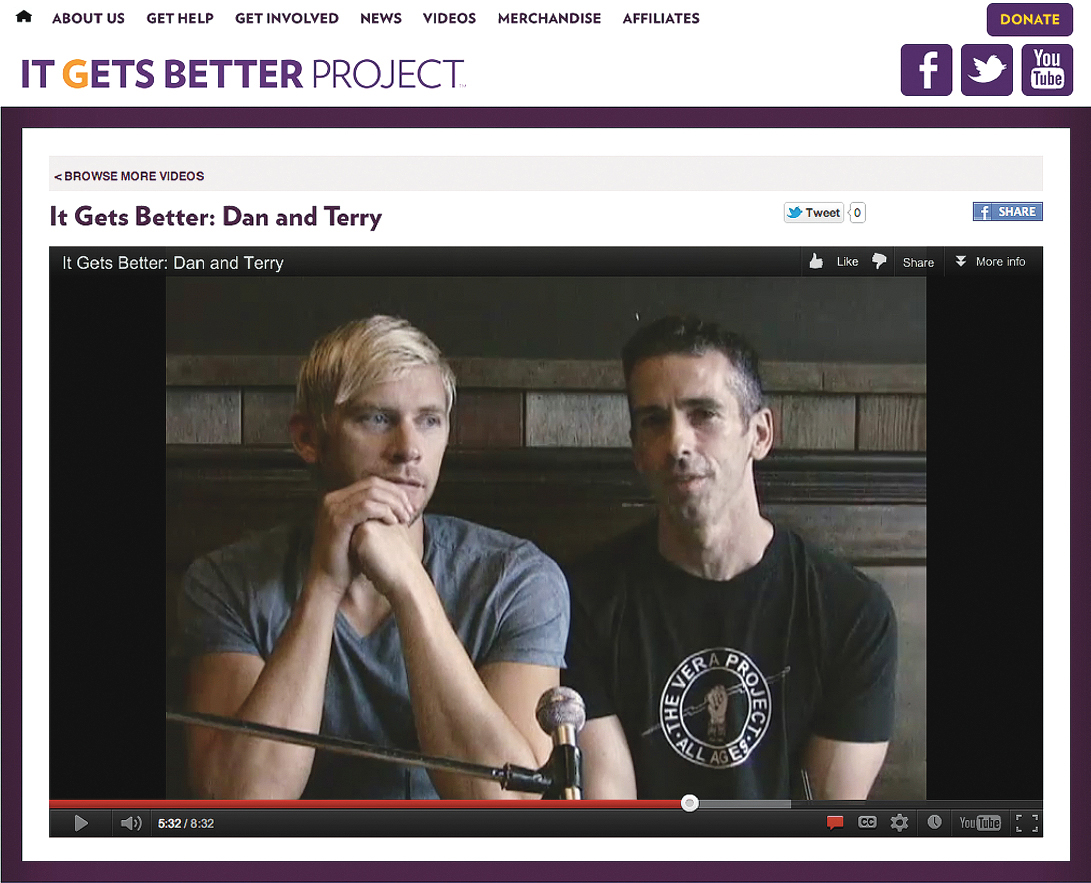16
Social Scientific and Cultural Approaches to Media Research
Printed Page 477

In 2010, soon after widely publicized stories attributing fifteen-year-old Billy Lucas’s suicide to antigay bullying, commentator and author Dan Savage launched the “It Gets Better Project” with a YouTube video created to inspire hope for young people enduring homophobic harassment at school and online. His idea snowballed into a worldwide movement generating over 30,000 user-created videos as well as submissions from celebrities, politicians, and media personalities. But even after the barrage of positive, inspiring messages, there are still stories like that of fourteen-year-old Jamey Rodemeyer, who had posted a video on Savage’s YouTube channel, but took his own life the following year. Rodemeyer had been bullied at school since the fifth grade—and had endured online messages like “I wouldn’t care if you died. No one would. So just do it :) It would make everyone WAY more happier!”1
In 2011, six people were killed and twelve wounded in a town near Tucson, Arizona. The attack took place in a supermarket parking lot, and the main target of the gunman was U.S. Representative Gabrielle Giffords, who was shot in the head. The deranged man responsible for the attack had posted a number of antigovernment messages on MySpace and YouTube. The attack prompted calls for stiffer gun control laws, as well as appeals to tone down the hyperbole and vitriol of political rhetoric associated with political activism during the heat of the Tea Party movement. Though Representative Giffords survived the shooting, she resigned her congressional seat in 2012 to focus on her medical recovery.
In 2012, the blogging site Tumblr announced a ban on blogs that “actively promote self-harm” including those facilitating or glorifying suicide, self-mutilation, anorexia, bulimia, or other eating disorders. Before launching the policy, Tumblr’s staff considered continuing to allow users to publish such material, but with public service messages warning users of the content and providing information about helplines and other support services. Ultimately, the staff adopted the ban after deciding that “sometimes Tumblr gets used for things that are just wrong.”2
These and other similar events have raised important questions: What power do the mass media have over individuals and society, and how do the media contribute to social problems like homophobia, bullying, suicide, self-mutilation, and eating disorders? And what should we do about it?
THE IDEA THAT MEDIA HAVE A SIGNIFICANT IMPACT on society has fueled the development of two types of research in the study of mass communication: social scientific and cultural studies.
Social scientific research attempts to understand, explain, and predict the impact of mass media on individuals and society. The main goal of this type of research is to define the problem with a testable hypothesis, collect data through one of various methodologies, and draw conclusions based on the data. Researchers who focus on cultural studies explore how people make meaning, understand reality, articulate values, and interpret their experiences through use of cultural symbols in media. Cultural studies scholars also examine how groups such as corporate and political elites use media to circulate their messages and serve their interests. Such research focuses on daily cultural experience, examining the subtle intersections among mass communication, history, politics, and economics.
In this chapter, we look at how these two forms of media research have evolved over time by:
- examining early media research methods, including propaganda analysis, public opinion research, social psychology studies, and marketing research
- assessing social scientific media research, including theories about how media influence people’s behaviors and attitudes and the benefits and limitations of such research
- taking stock of cultural approaches to media research, including early and contemporary cultural studies theories and the strengths and limitations of such research
- considering the role of media research in our democracy, exploring questions such as how effectively such research addresses real-life problems